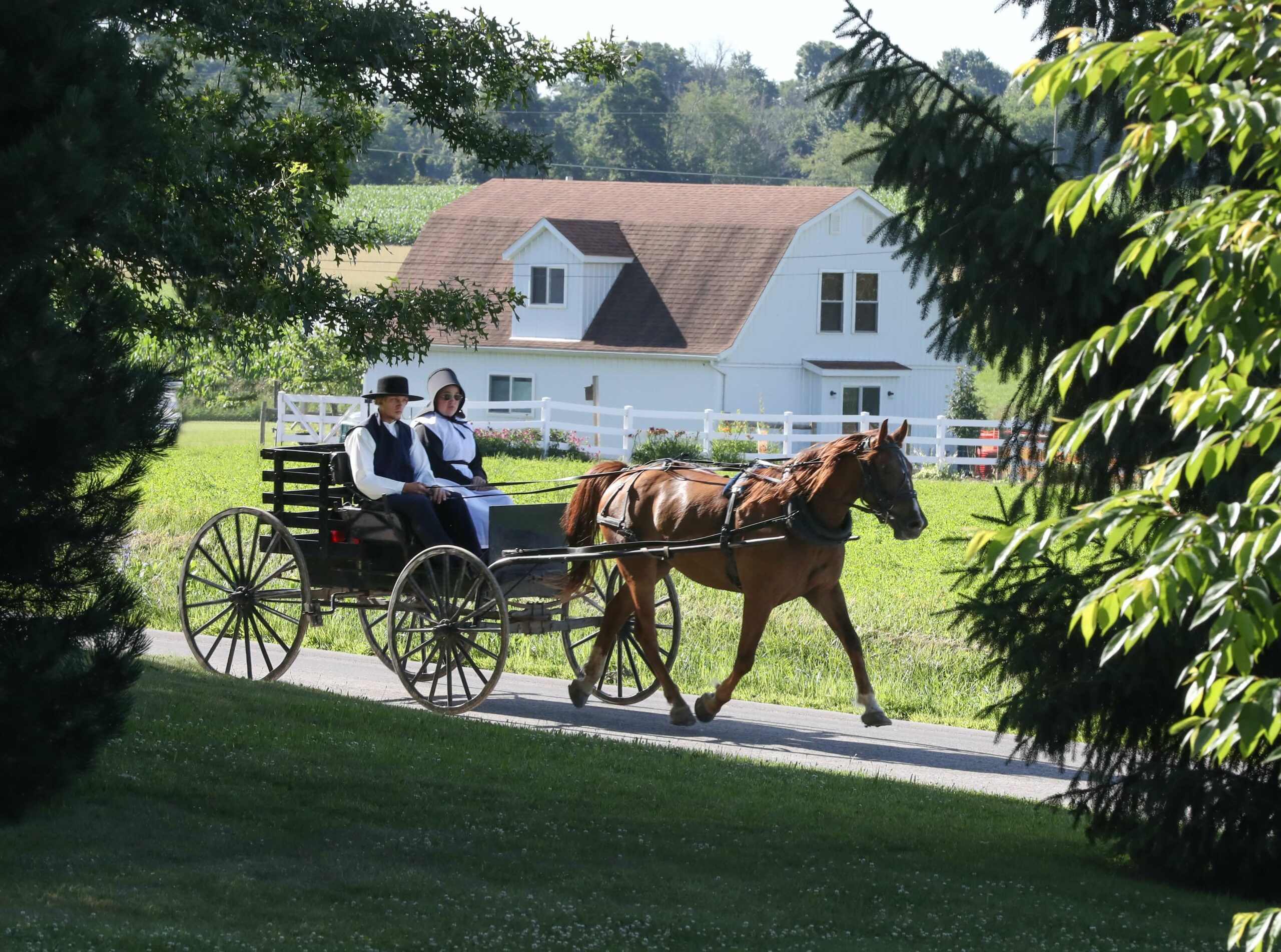The Amish have interesting approaches to life that seem foreign to many people.
Learning about Amish wedding traditions helps you understand what people in this culture truly value—family and togetherness.
Read on to learn common Amish wedding traditions and rituals, and see what you’d like to integrate into your service.
13 Amish Wedding Traditions and Rituals
Mainstream weddings are glamorous, glitzy affairs. As of 2021, the average wedding cost in the United States was $28,000. I can’t imagine spending that much money on a party that lasts a few hours! Think about it—that amount of money would allow me to put down a deposit on a house or buy a small car!
On the other hand, the Amish cut the wedding ceremony down to the essentials. The community gathers to cook a delicious meal, and the service takes place in the bridge’s home. There are no photographers, no wedding band, and no dancing. Yet the Amish have wonderful celebrations and can accommodate anywhere from 200 to 400 guests.
I admire this ability to host a meaningful wedding without spending thousands of dollars, and I wanted to consider adopting some of these Amish wedding traditions for myself.
1. Sew Your Own Wedding Dress
As you might expect, the Amish prefer to have all-new clothes for a wedding ceremony. However, they don’t go for fittings and spend hundreds of dollars on dresses they’ll only wear once. They all sew new clothes for the occasion. Even the groom will get a newly-sewn black suit, as will his attendants. The groom wears a wide-brimmed black hat to set him apart.
The bride’s dress is a dark color, typically black, blue, or purple. It’s a practical dress so she can wear it after the wedding. Amish brides wear their wedding dresses to church every Sunday after marriage. They’re often buried in that dress, too.
The wedding dress isn’t fancy, but there are white elements involved. The bride and her attendants sport white aprons and capes. As Amish women wear white caps every day, the bride stands apart by wearing a black prayer cap instead.
2. Prepare the Home for the Ceremony
Amish weddings typically occur in November and December. The community will have harvested their crops, so they have time to prepare for and attend the ceremony. These months have decent weather, so there’s no need to worry about severe storms or coldness.
If a community has many weddings around the same time, they’ll extend the celebrations into early spring. They never have a wedding on a Saturday because they reserve the next day for clean up, which would interfere with church.
The week before the wedding revolves around preparation. As the ceremony is at home, everything must be clean and ready to accommodate hundreds of guests. The farm should also be in good shape since the entire community will look at it. The barn should have space for guests to tie up their houses during the ceremony.
The hosts will borrow wooden benches from everyone in town to ensure they have seating for everyone. No one will need to stand, but the guests will sit packed together since there are so many people in a small space.
Neighbors often prepare food ahead of time. They might cook it on the wedding day, but they can compile ingredients and have the prep work done during the week before the ceremony.
3. Wake Up Early To Complete Chores
Everyone wakes up early to give the property one last look and complete any final duties. The yard should look nice, and the barn should be ready for more horses. Since the wedding lasts all day, people care for their animals early so they won’t have to go long without food.
Many neighbors arrive early to help cook. Some last-minute changes in seating and bench layout can occur on the morning of the wedding.
4. Use Celery as Food and Decorations
When an Amish girl gets engaged, her family plants celery. Neighbors who stay aware of what’s happening will know about the proposal just by seeing the celery garden. But the vegetable isn’t just a remarkable way to make an announcement—it grows until the wedding day and then makes up many recipes for dinner.
Celery is part of the Amish casserole served at the wedding meal. It includes celery and chicken, and the family serves creamed celery as a side dish.
The wedding party doesn’t carry flowers, so there’s no need to spend hundreds of dollars on this item. There are few decorations to distract guests from the purpose of their coming together, which should focus completely on the newlyweds.
Instead, celery comes into play for decorations as well. Dining tables have centerpieces of leafy celery stalks in mason jars.
5. Start the Wedding at 8:30 am
Since Amish wedding ceremonies and celebrations take so long, the service starts promptly at 8:30 am. This start time gives you an idea of how early everyone gets up to complete the chores!
Four married couples from the community volunteer to serve as ushers. They help guests come to the house and find places on the benches before the ceremony starts. The guest list can include anywhere from 200 to 400 neighbors, so being an usher is a crucial job. Once everyone has a seat, the ceremony will last for three hours.
6. Have Private Counseling With the Minister
While their community celebrates their relationship and sings hymns in the central part of the house, the couple goes with the minister for private counseling. This intimate gathering is a chance for the couple to share their relationship goals with their minister. They can also establish priorities before making their commitment in front of everyone.
7. Have a Complete Ceremony
The neighbors sing hymns during the couple’s meeting with the minister, but they’ll sing more later. When the couple completes their counseling, they’ll return to the home’s main room. The minister leads the group in prayers, reads scripture, and delivers the sermon.
The couple then joins the minister at the front of the room. Instead of reciting the vows we’re familiar with, the minister asked the couple questions about their marriage. They have a chance to tell their community what they hope and expect from their commitment. The minister blesses the couple at this point, then finishes the ceremony with another prayer.
The general structure of an Amish wedding is as follows:
- Sing hymns
- Recite prayers
- Read scripture
- Listen to a sermon
- Offer a blessing
- Final prayer
Though the bride and groom each have attendants, there is no maid of honor or best man as there is in many other weddings. The attendants sit with the rest of the community and don’t flank the minister as you might imagine.
8. Enjoy a Meal Together
The women prepare the food as soon as the ceremony ends while the men move the benches and add tables to the space. Everyone who attends the ceremony stays for the meal but may have to eat in shifts. For example, you may only have tables to seat 100 people, so you must serve the meals twice so all 200 guests can eat.
9. Have an Eck Table for the Newlyweds
The guests may have to wait for a space at a table to enjoy the meal, but the newlyweds have their own table. The “Eck” is in the corner, so the newlyweds have a great view of everyone who came to celebrate with them. The bride sits on her new husband’s left side, which is how they’ll sit when they travel together in their buggy.
10. Serve Delicious Homemade Food
Since the women of the community spent so much time preparing the food during the week before the wedding, you know it will be delicious. Typically food served at an Amish wedding includes:
- Celery and chicken casserole
- Creamed celery
- Fried sweet potatoes
- Peas and homegrown vegetables
- Desserts such as pies and cookies
11. Greet Guests and Distribute Wedding Favors
After the newlyweds eat, they walk around the room and greet their guests. They often distribute wedding favors to thank everyone for their help and attendance. The wedding favors are small but thoughtful, usually pieces of candy.
12. Help Clean Up the Next Day
An Amish wedding ceremony starts at 8:30 am and often lasts until 10:30 pm, so there’s no time to clean up. Everyone needs to go home and rest, but the community helps clean up the next day. Even the newlyweds help clean up! They spend the night at the bride’s house, ready to help as soon as they wake up.
13. Visit Relatives on Your Honeymoon
Most people think of the honeymoon as another massive wedding expense because you’re flying to a new country for a week’s vacation, but the Amish do something different. The newlyweds visit relatives in the surrounding areas for their honeymoon. They travel every weekend after their wedding, sharing their love with family and collecting wedding gifts.



